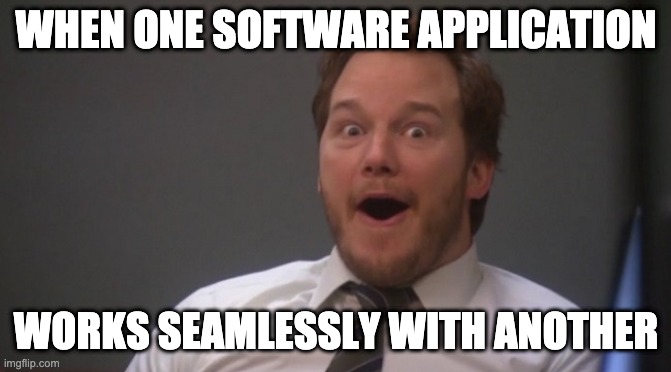You see it everywhere. From built-in Zoom details in Google calendar invites, to hotel information on Trivago—it’s become the norm for our technology to connect seamlessly. RFP response software should be no exception.
These connected tools help you work smarter, not harder. And that’s exactly what Loopio’s API does too, allows you to connect response software to your organization’s larger tech ecosystem.
For those of you who may be new to the world of APIs (application programming interfaces), let’s start with the basics. APIs help you create custom integrations between your tools, so they can share information between each other. In the case of RFP software, APIs make it possible to streamline the RFP process, improve data visibility, and increase adoption of your response management tool.
Read on to learn what an API is, the benefits of Loopio’s, and how to use it. (Or, if you’re a developer, feel free to skip ahead.)

What’s an API?
Simply put, an API gives one application the ability to securely and seamlessly access another application’s data.
Even if you’re not familiar with the term API, chances are that you still benefit from APIs every day. Think of travel search engines like Expedia or Trivago: they’re able to pull up available hotel information from hundreds of travel sites using APIs.
In business, APIs allow us to connect data across different technology platforms, enabling them to work together to save you time and give you better insights. Which brings us to our next point…
What Are the Benefits of Loopio’s API?
Ultimately, it’s all about making your life easier. Loopio’s API gives customers the ability to create custom integrations with their internal or third-party tools, which go above and beyond our integrations. This opens up a wide variety of options, from accessing RFP Library content through third-party platforms, to translating Library content into another language by integrating a translation service.
The possibilities are (nearly) endless and so are the potential benefits: streamlined processes, better data visibility, and improved technology adoption, to name a few.
Loopio’s API also gives you the flexibility to integrate with existing or future tools, giving you peace of mind that the platform will always be a great fit for your tech ecosystem.
What Can You Do with Loopio’s API?
The best way to answer this question is to explain what kind of data can be shared between Loopio and other applications. The Loopio API enables other tools in your tech stack to:
- Search your RFP response library
- Retrieve library content
- Create or update library content
- Search your Loopio Projects
- Retrieve project information
- Create a new Loopio Project
- Update information in a Loopio Project
- Create variables in Loopio
- Trigger external workflows when specific events happen in Loopio through Webhooks
- Trigger an action in Loopio when something happens in a third-party tool
These actions are made possible through API “endpoints”—developers can find a complete list of the Loopio API’s endpoints in our API documentation.
Who Has Access to Loopio’s API?
Our API can be leveraged by any customer on a Loopio subscription plan. However, it’s important to note that developing a custom integration using an API is a project for an experienced development team.
In order to make use of Loopio’s API, you will need your trusty developers to write the code that requests information from our API—then actions the information it receives.
How Do I Start Using Loopio’s API?
Every API has documentation, and this is where your team will find the instructions they need to get started. Your development team will need to review Loopio’s API documentation to learn how to effectively use and integrate with our API.
Access Loopio’s API documentation here.

What Type of API Support Can You Expect From Loopio?
Loopio provides detailed API documentation for your development team’s use and ongoing reference. However, Loopio does not have the ability to provide hands-on developmental assistance.
Our API documentation includes all the information your team should need to build your custom integration.
Want to Use Loopio’s API? Here Are Your Next Steps
To explore building a custom integration with Loopio’s API, there are a couple of key stakeholders you’ll want to speak with. First and foremost, we recommend connecting with your team to assess organizational buy-in and available resources. Your IT Operations team should be on board as well.
If your organization intends to pursue the idea, we encourage your development team to review our documentation to determine how they’ll work with Loopio’s API.
Finally, let your Loopio Customer Success Manager know about your plans. Not only are they always a great resource to bounce ideas off, they’re your partner in long-term success with Loopio’s platform.
Not yet a customer?
Connect with our team and let them know you’re interested in learning more about Loopio and our API.
